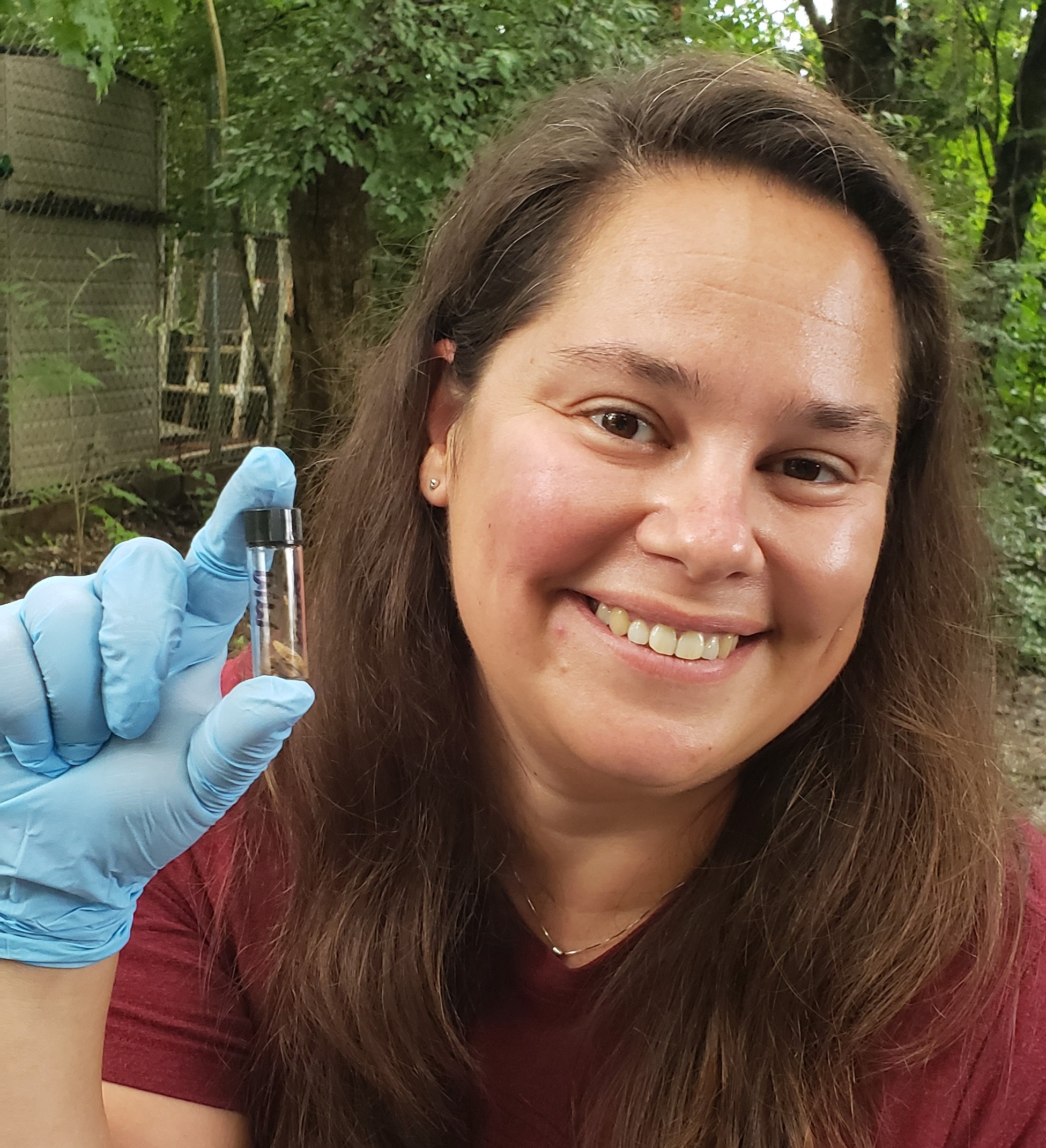
Melanie Beasley
- Assistant Professor // Anthropology
- Assistant Professor // Cornerstone
Research Focus
paleoanthropology, bioarchaeology, forensic anthropology, stable isotopes
Office and Contact
Courses
ANTH 100: Being Human: Introduction to Anthropology
ANTH 204: Human Origins
ANTH 215: Introduction to Forensic Anthropology
ANTH 337: Human Diet: Origins and evolution
ANTH 436: Human Evolution
EDUCATION
Melanie Beasley received her B.S. in Anthropology from University of California, Davis (2003), M.A. in Anthropology from California State University, Chico (2008), and Ph.D. in Anthropology from the University of California, San Diego (2016). From 2017-2019, she was a Haslam Postdoctoral Fellow at the University of Tennessee, Knoxville conducting research at the Forensic Anthropology Center. Dr. Beasley joined Purdue University as an Assistant Professor in Fall 2019.
SPECIALIZATION
Biological anthropology, human-environment interactions, stable isotope ecology, paleoanthropology, human evolution, bioarchaeology, prehistoric diet and health, forensic anthropology, stable isotope forensics for predicting region-of-origin, human versus non-human bone identification, and decomposition/post-mortem interval estimation.
Dr. Beasley’s work focuses broadly on human-environment interactions throughout the hominin lineage when the environment is influencing our evolutionary history, in the Holocene when humans are influencing the availability of prey resources, and in modern forensic contexts when the environment imprints meaningful geolocation information in biological tissues. She uses stable isotope geochemistry to connect humans and the environment they live in to understand changing climate, resource availability, and life history. The use of stable isotope geochemistry and the big data generated by such an analytical method in anthropology has only scratched the surface of what it can offer to the discipline and its contributions to humanity’s grand challenges. Through her scholarship, she sees the Anthropology of Tomorrow as an interdisciplinary blending of the social and natural sciences in an applied approach that makes anthropology relevant to living communities. Dr. Beasley is interested in science communication to engage with the public about anthropology.
At Purdue, Dr. Beasley directs the Bioanth Isotope Ecology Research Laboratory (BIER Lab). Please contact her via email if you are interested in working in the lab as an undergraduate or for enquiries about graduate student training. Dr. Beasley is accepting applications for future MA/PhD students.
SELECTED PUBLICATIONS
Beasley MM, Lesnik J, McKee-Zech H, Duncan A. Part 1: Using Stable Nitrogen Isotope Ratios from Human Skeletal Muscle Tissue for Postmortem Interval (PMI) Estimation. Forensic Anthropology (Accepted, In Press)
Beasley MM, Lesnik J, McKee-Zech H, Duncan A. Part 2: Using Stable Nitrogen Isotope Ratios from Fly Larvae for Postmortem Interval (PMI) Estimation. Forensic Anthropology (Accepted, In press)
Beasley MM, Schoeninger MJ, Miller R, Bartelink EJ. 2024. Preservation of bone organic fraction is not indicative of the preservation of bone inorganic fraction when assessing stable isotope analysis sample quality control measures. Journal of Archaeological Science. 162: 105996 (https://doi.org/10.1016/j.jas.2023.105886)
Beasley MM, Somerville AD. (Editors). 2023. Exploring Human Behavior through Isotope Analysis: Applications in Archaeological Research. Springer, Cham. (https://doi.org/10.1007/978-3-031-32268-6)
Chesson LA, Beasley MM, Bartelink EJ, Jans, MME, Berg G. 2021. Using bone bioapatite yield for quality control in stable isotope analysis applications. Journal of Archaeological Science: Reports. 35:102749 (https://doi.org/10.1016/j.jasrep.2020.102749)
Beasley MM and Remy C. 2021. Can we identify cystic fibrosis (CF) from skeletal remains?: A proposed differential diagnosis. The Anatomical Record: Advances in Integrative Anatomy and Evolutionary Biology. 304(4):725-731. (https://doi.org/10.1002/ar.24576)
Bartelink EJ, Beasley MM, Eerkens JW, Gardner KS, Wiberg RS, and Garibay R. 2020. Stable isotope evidence of diet breadth expansion and regional dietary variation among Middle-to-Late Holocene Hunter-Gatherers of Central California. Journal of Archaeological Science: Reports. 29:102182. (https://doi.org/10.1016/j.jasrep.2019.102182)
Jaouen K, Beasley MM, Schoeninger MJ, Hublin JJ, Richards MP. 2016. Zinc isotope ratios of bones and teeth as new dietary indicators: results from a modern food web (Koobi Fora, Kenya). Scientific Reports 6:26281. (https://doi.org/10.1038/srep26281)
Beasley MM, Bartelink EJ, Taylor LL, Miller RM. 2014. Comparison of transmission FTIR, ATR, and DRIFT: Implications for assessment of diagenesis of bone. Journal of Archaeological Science. 46:16-22. (https://doi.org/10.1016/j.jas.2014.03.008)
Bartelink EJ, Berg GE, Beasley MM, Chesson LA. 2014. Application of stable isotope forensics for predicting region-of-origin of human remains from past wars and conflicts. Annals of Anthropological Practice, special volume (invited): “Practicing Forensic Anthropology: A Human Rights Approach to the Global Problem of Missing and Unidentified Persons”. 38(1):124-136. (https://doi.org/10.1111/napa.12047)
Beasley MM, Martinez AM, Simons DD, Bartelink EJ. 2013. Paleodietary analysis of a San Francisco Bay area shellmound: stable carbon and nitrogen isotope analysis of late Holocene humans from the Ellis Landing site (CA-CCO-295). Journal of Archaeological Science.40:2084-2094. (https://doi.org/10.1016/j.jas.2012.11.019)